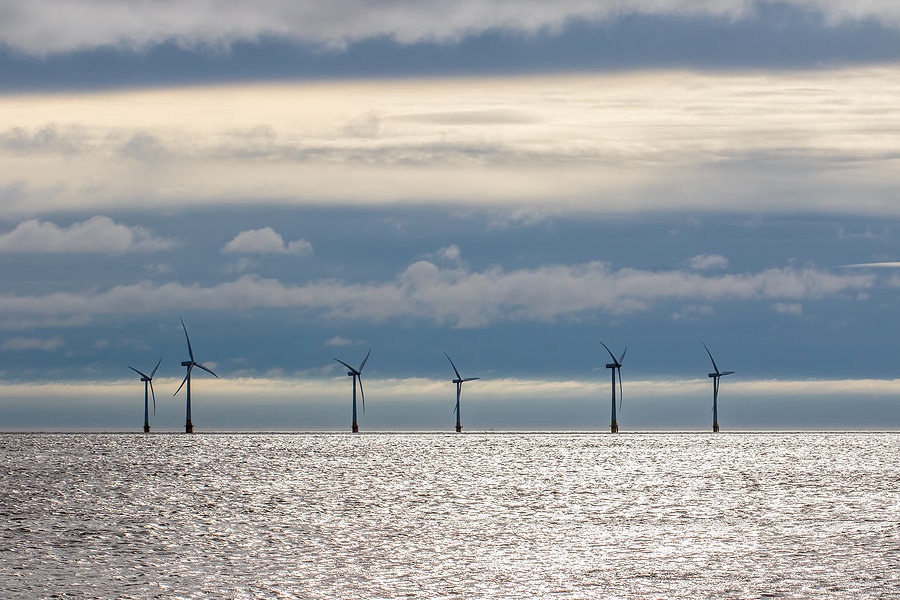Offshore Wind Solicitations Address Equity

Energy equity has become an increasing priority at both the national and state levels. As offshore wind moves into a major development phase, ensuring that it advances energy equity and environmental justice is essential.
For the federal government, President Joe Biden elevated the importance of an “equitable, clean energy future” in his January 27, 2021 Executive Order on Tackling the Climate Crisis at Home and Abroad. The Order seeks to tackle climate inequities, reduce air pollution in disadvantaged communities, and direct 40% of clean energy benefits to low-income communities and communities of color. The Order specifically addresses the need for economic revitalization of communities that have suffered from impaired health and financial distress as a result of power generation activities adversely affecting air and water resources. Communities located adjacent to polluting power generators are often low-income communities of color that not only suffer from poor air quality and other environmental pollutants, but also do not have the financial means to challenge polluting generators. The Order envisions a range of assistance, including decarbonization of energy sources, financial assistance programs, and helping residents enroll in training programs to gain skills necessary to participate in a clean energy economy.
States are also taking action to acknowledge and address clean energy relationship to environmental justice. For example, New York’s Climate Leadership and Community Protection Act, passed in 2019, calls for 40% of clean energy investments to benefit low- to moderate-income (LMI) and disadvantaged communities. In New Jersey, the Clean Energy Equity Act was introduced in mid-2020 in the senate to bring clean energy benefits to LMI and environmental justice communities. While the New Jersey act focuses on solar energy, it clearly sends a signal that clean energy development should consider equity. More recently, Governor Phil Murphy signed Executive Order No. 221 establishing the Office of Climate Action and the Green Economy that will prioritize equity and environmental justice in the transition to a green economy.
The current offshore wind goals for New York, New Jersey, Connecticut, Massachusetts, Rhode Island and Maryland total 30 GW by 2035. At that scale, offshore wind holds much promise for decarbonizing the power sector, while creating many opportunities for growing a domestic clean energy workforce and bringing economic development and recovery to vulnerable communities through job creation. The sector also brings workforce training opportunities and can involve local businesses, especially near ports, in offshore wind development and logistics. Developed at the scale of the Northeast goals, offshore wind has the potential to replace peaker powerplants and alleviate health risks and other inequities in environmental justice communities situated adjacent to older, single-cycle fossil fuel turbines which generate electricity inefficiently to meet peak demands.
Recent offshore wind solicitations in New York (July 2020) and New Jersey (February 2020) contained equity provisions that support the development of a local workforce by requiring developers to provide workforce training and support minority-owned businesses. Furthermore, the solicitations prioritize workforce development benefits for environmental justice communities.
New York’s offshore wind solicitation specifically prioritizes disadvantaged communities, which are defined as “communities that bear burdens of negative public health effects, environmental pollution, and impacts of climate change.” The solicitation’s requirements include:
- 40% of the overall benefits from clean energy programs must go to disadvantaged communities for workforce development, low-income energy assistance, and housing. Other investments and projects may also qualify;
- community engagement plans that provide opportunities to build community equity;
- prioritization of job creation and other benefits for disadvantaged communities.
New Jersey’s Offshore Wind Solicitation #2, issued in September 2020, includes the following equity requirements:
- a description of an economic development plan to include diversity and inclusion initiatives as part of the training program and hiring practices;
- planned in-state spending that will support environmental justice communities by providing jobs, grants, training programs, or environmental benefit projects to address historical and cumulative impacts in economically disadvantaged communities;
- participation in workforce development programs, particularly for environmental justice communities.
The New York State Energy Research and Development Authority (NYSERDA) awarded two offshore wind contracts to Empire Wind and Beacon Wind as a result of its solicitations. Both companies have pledged to benefit disadvantaged communities and to support the retirement of fossil fuel generators in Queens and Nassau Counties. Empire is renovating the Brooklyn port to assemble and maintain wind turbines. Residents from underserved neighborhoods will be employed at the port. In addition, NYSERDA expects the reduction in pollution accruing from these offshore wind projects to result in $700 million in avoided health impact benefits.
In New Jersey, offshore wind developer Ørsted, which was awarded a contract from that state’s solicitation, is incorporating environmental justice initiatives into its research, grants, and workforce training programs for its Ocean Wind 2 project.
New York and New Jersey are not the only states recognizing renewable energy’s role in addressing equity. If enacted, Massachusetts’ Senate Bill 9 would codify technologies such as offshore wind with which Massachusetts can achieve net-zero greenhouse gas emissions by 2050. The bill requires the Massachusetts Clean Energy Center to establish a clean energy equity workforce and market development program for minority- and women-owned small businesses and for those living in environmental justice communities.
As renewable technologies continue to be deployed at scale, the opportunities to address equity will continue to grow. Whether by training and employing residents of environmental justice communities or eliminating harmful pollutants in disproportionately affected communities, clean energy initiatives can ensure that every citizen benefits from the decarbonization of energy.
This article was also published in Windpower Engineering & Development.
Published On
March 15, 2021

